Fury on Wheels: The Legendary Chariot Races of Ancient Rome
Chariot racing was one of the most popular and enduring spectacles in ancient Rome, captivating audiences for centuries.

Chariot racing has roots in ancient Greece, particularly in the Olympic Games. The Romans adopted and adapted this sport, making it a central part of their entertainment culture. It was immensely popular among all classes of Roman society, from emperors to common citizens.
Chariot racing in Circus Maximus
Chariot races were held in large arenas called circuses, the most famous being the Circus Maximus in Rome. The Circus Maximus was the largest stadium in Rome, designed for chariot racing (ludi circenses) capable of seating around 150,000 spectators.
It was situated in the valley between the Palatine and Aventine hills. The circus featured a long, oval track with a central divider called the spina. At each end of the spina were turning posts (metae), which were critical points in the race.
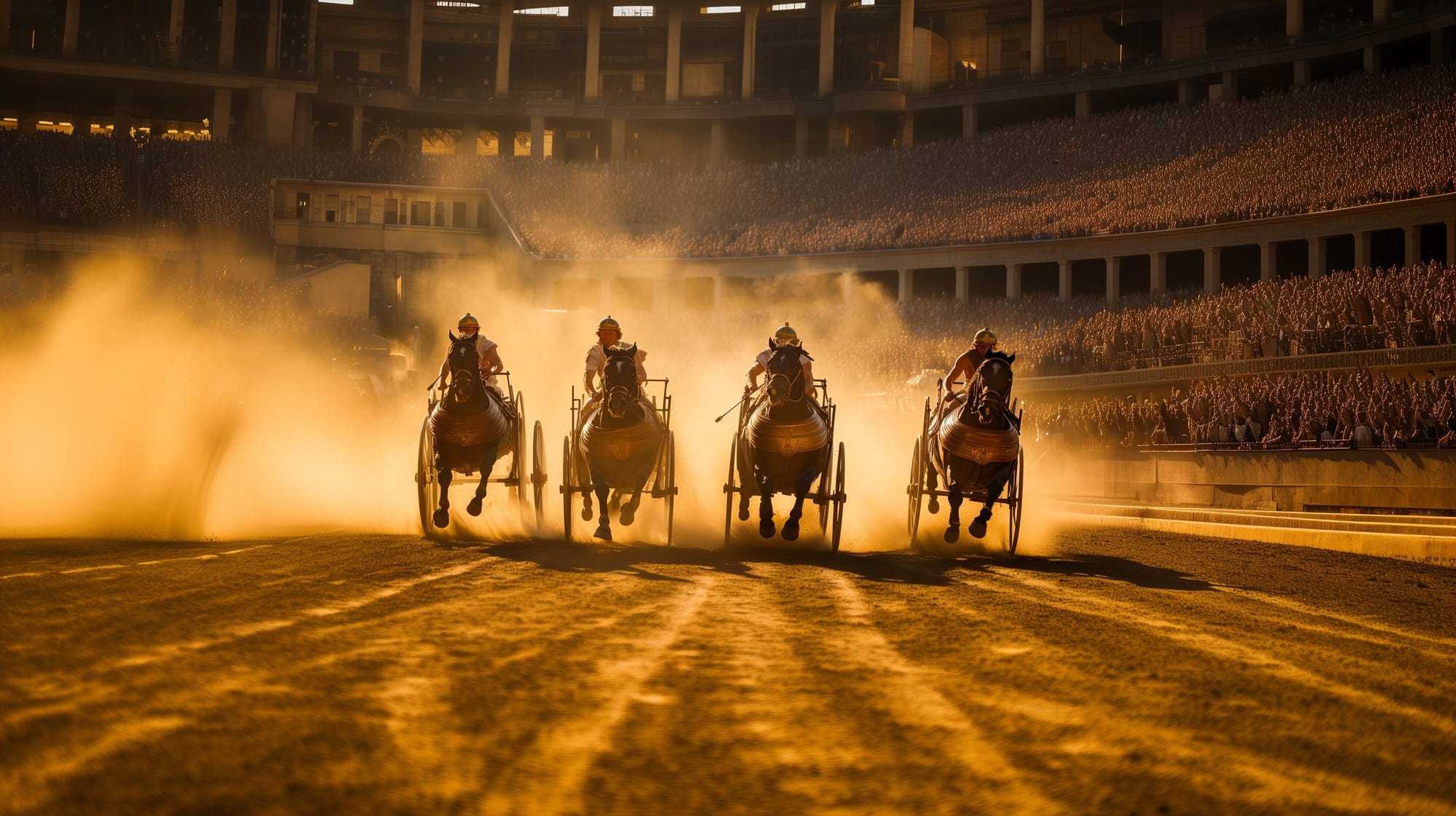
The Roman Games
The public games in ancient Rome began with religious ceremonies. Early games, such as those associated with the rape of the Sabine women, honored the god Consus, while the Equirria festival celebrated Mars. The religious aspect of these games persisted even during the Republic, as highlighted by Cicero, who noted the importance of flawless ritual execution.
Any mistake required the games to be restarted, sometimes multiple times, which Claudius suspected was occasionally manipulated to extend the duration. Initially held sporadically to appease gods, these games eventually became regular events. By the end of the Republic, games were held about 77 days a year, with increasing funds allocated from the Treasury.
The games mainly featured chariot races and dramatic performances. Chariot races took place in circuses, the most famous being the Circus Maximus. The circus had a long, oval-shaped arena surrounded by tiers of seats, with starting gates (carceres) at one end and a central dividing wall (spina) with turning posts (metae) at each end. Races consisted of seven laps, with markers like eggs or dolphins indicating the remaining laps.
The chariots were lightweight, two-wheeled vehicles pulled by teams of two or four horses, although some depictions show larger teams. The charioteers were often slaves or freedmen, and occasionally nobles during the Empire, while respectable Romans typically watched rather than participated. The games began with a grand procession led by the presiding magistrate, followed by competitors and images of the gods, starting from the Capitol and entering the circus through the gate between the carceres.
Around twenty-four races were held each day, though by the end of the Republic, the number had reduced to about twelve. Between races, the intervals were filled with performances by trick riders, known as desultores, who would leap from one horse to another while in full gallop. (The public games of the Romans by J. B. Poynton)
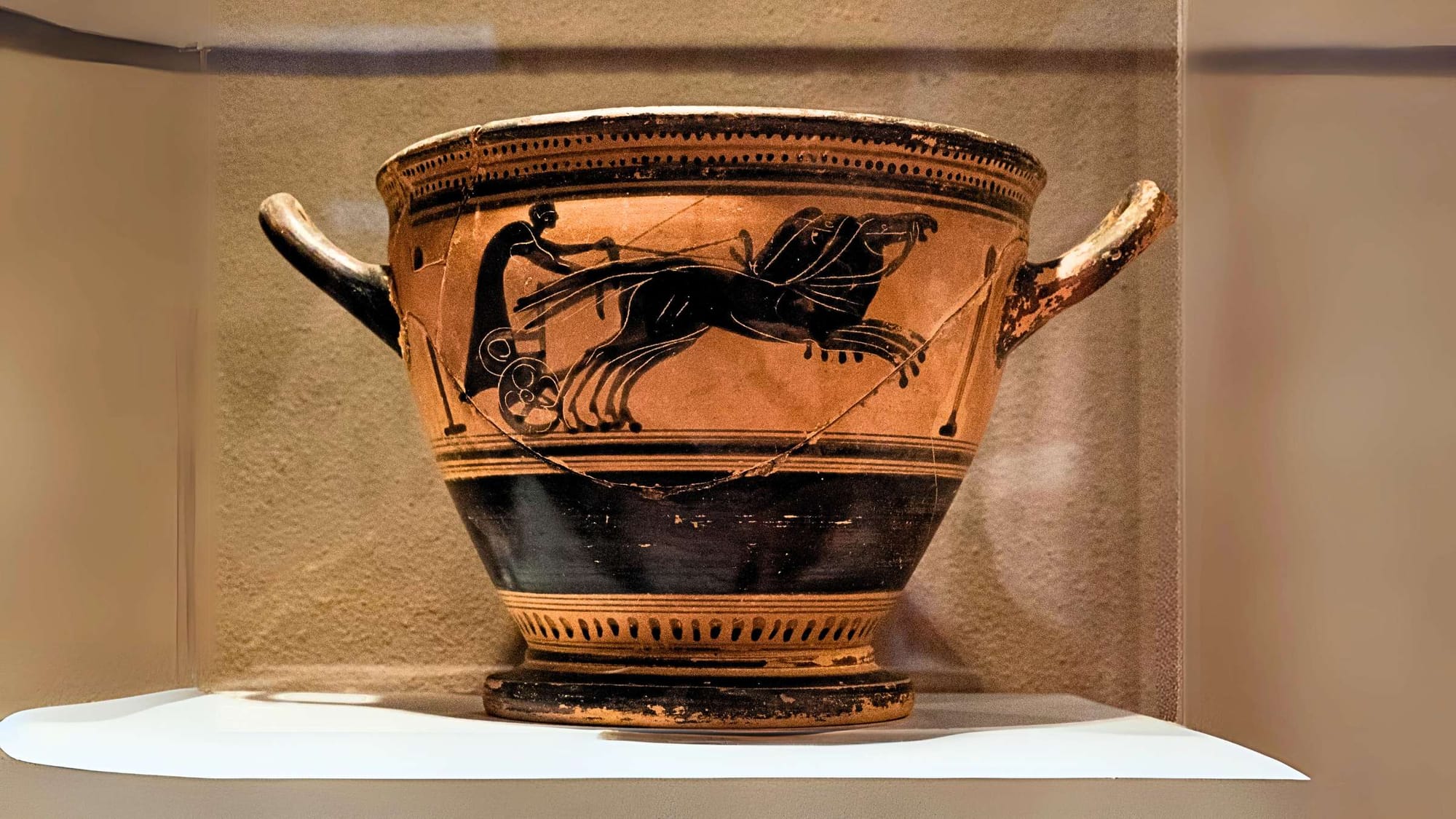
Beyond the Arenas and the Gladiators
The Circus Maximus was a microcosm of Rome, reflecting all social classes from the Emperor to the plebs and lowest slaves, united by their love of chariot races. In the first two centuries of the imperial era, with Rome's population around a million, approximately 150,000 people attended the Circus Maximus on major race days, equating to about a seventh of the population.
Annually, around 3 million people attended the races. By the fourth century, the number of race days increased to sixty, drawing a total of 9 million visitors each year, underscoring the centrality of chariot racing in Roman life.
The arrival of dignitaries and the emperor was a significant event, with spectators standing and cheering. Martial mentioned that applause for Emperor Domitian once lasted so long that the first four races were missed. During the races, the crowd often chanted slogans supporting the emperor, reflecting their loyalty. An emperor who frequently missed race days risked inciting the crowd's displeasure.
By the beginning of the imperial era, ordinary citizens had lost most of their political influence, and the Circus Maximus was one of the few venues where they could directly communicate with the emperor. Discontented crowds could turn on the emperor during races, demanding policy changes, which could lead to protests or riots. Most emperors responded positively to avoid conflict.
Commodus, despite his insensitivity, avoided direct confrontations with unhappy spectators. For instance, when the crowd demanded the removal of Cleander, the Praetorian Guard's prefect, due to a food shortage, Commodus complied and ordered Cleander's execution. (Chariot racing in the Roman Empire by Fik Meijer)
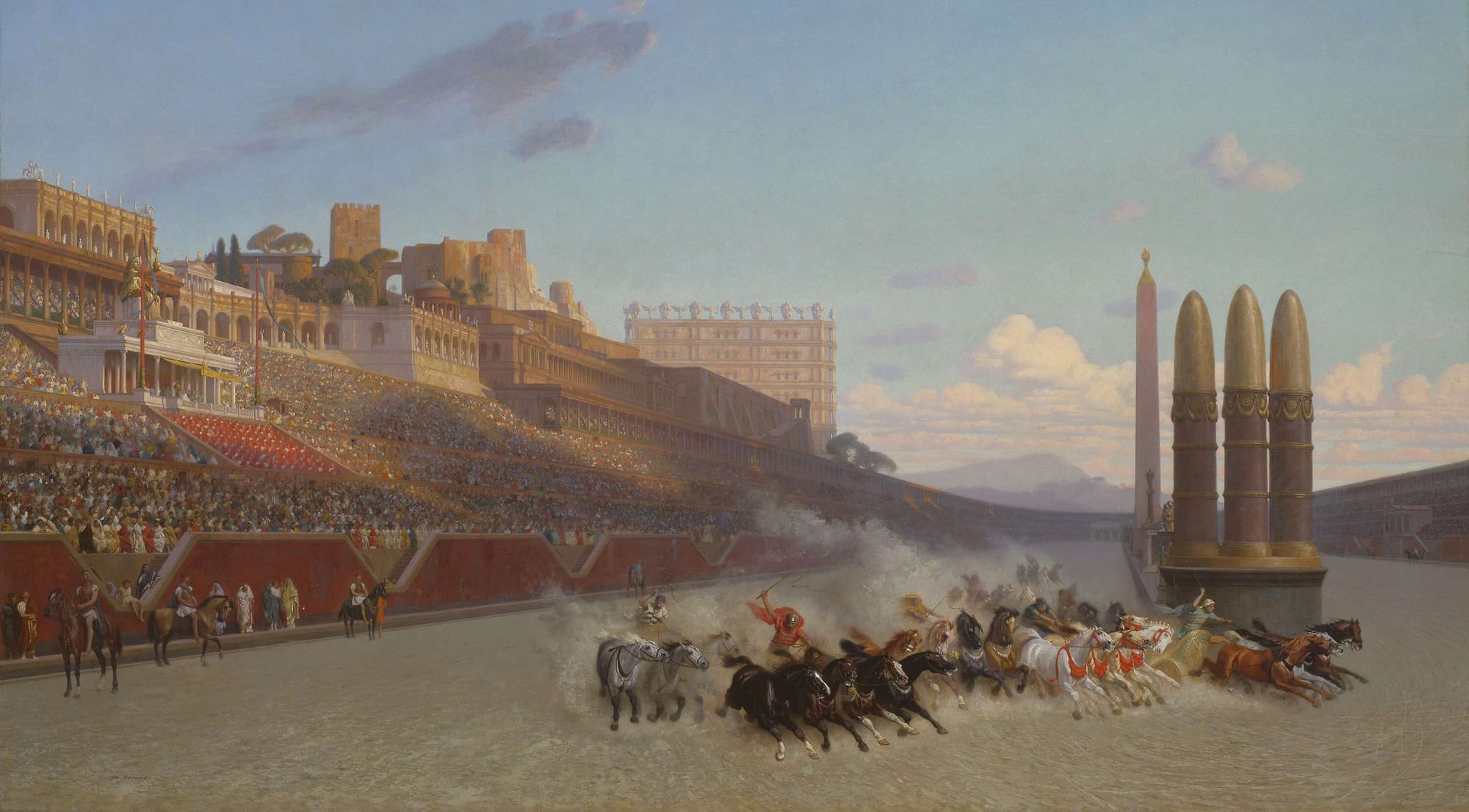
The Roman Charioteers
Charioteers were divided into four factions or teams, each identified by a color: Red (Russata), White (Albata), Blue (Veneta), and Green (Prasina). These teams had passionate followings, much like modern sports teams. Chariots were typically lightweight and drawn by teams of two (bigae) or four (quadrigae) horses.
The skill and bravery of the charioteer were crucial, as the races were dangerous. A typical race consisted of seven laps around the circus, covering a distance of approximately 3 to 4 miles. Races often involved up to twelve chariots competing simultaneously.
Successful charioteers could achieve great fame and wealth. They were akin to modern sports stars, with fan clubs and a significant public following. The profession was hazardous, with frequent accidents and even deaths. Charioteers had to navigate tight turns, avoid collisions, and handle horses at high speeds.
Chariot racing was also a major betting event, with spectators placing bets on their favorite teams and charioteers. Fans were intensely loyal to their teams, sometimes leading to violent rivalries and riots. Emperors and politicians often aligned themselves with particular factions to gain public favor.
Spectators primarily came to the races to watch their favorite drivers triumph, with being close to the emperor as an additional perk. Unlike Ovid, who watched with amazement, most attendees were enthusiastic members of one of the four racing stables, or factiones, hoping their team would win the most prizes. Wearing green, blue, red, or white shirts, fans loudly cheered for their champions and jeered at the rival charioteers.
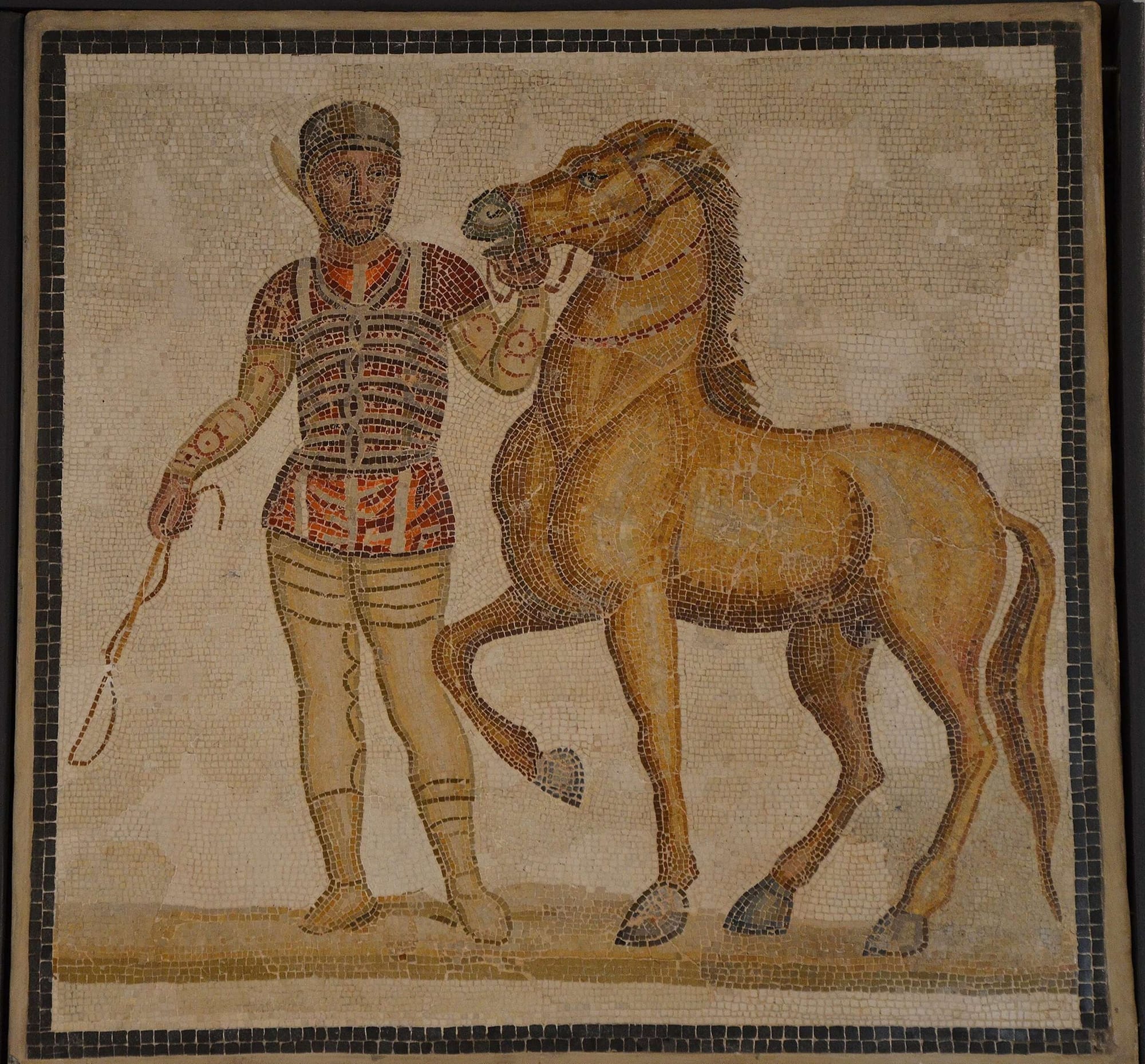
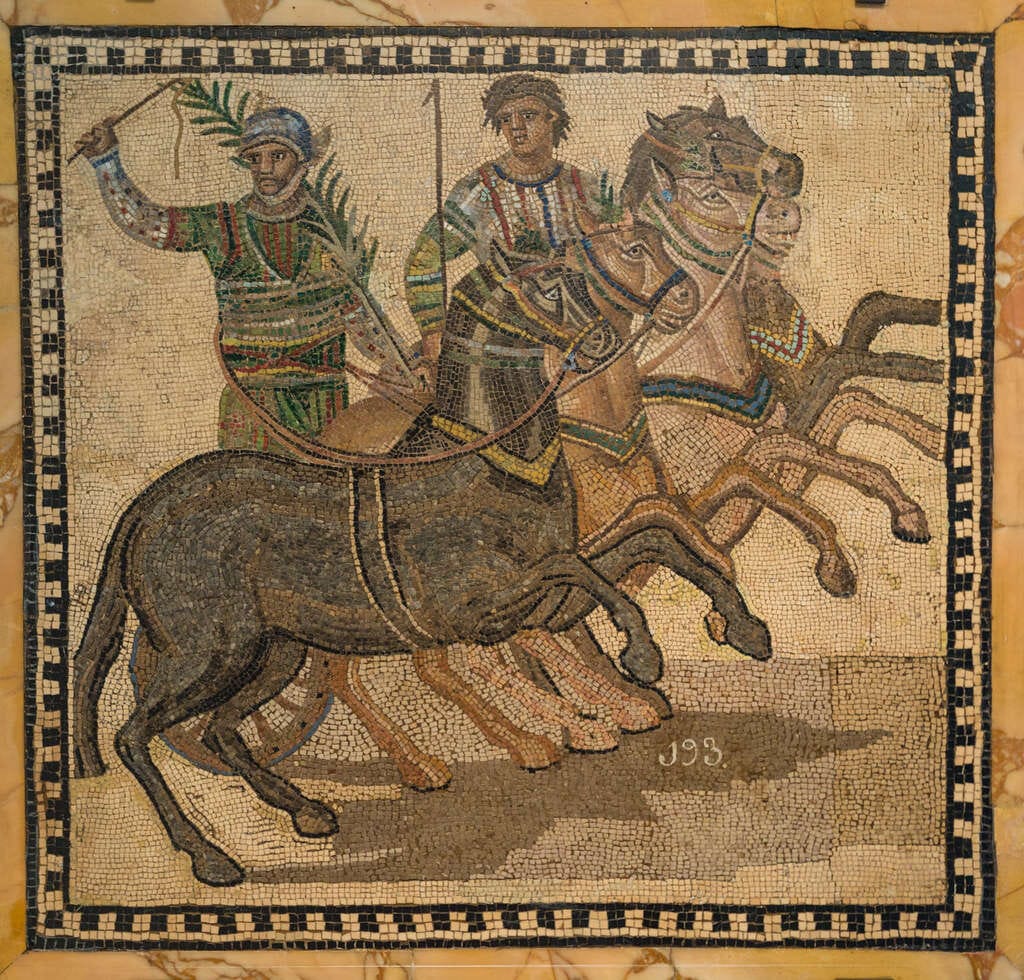
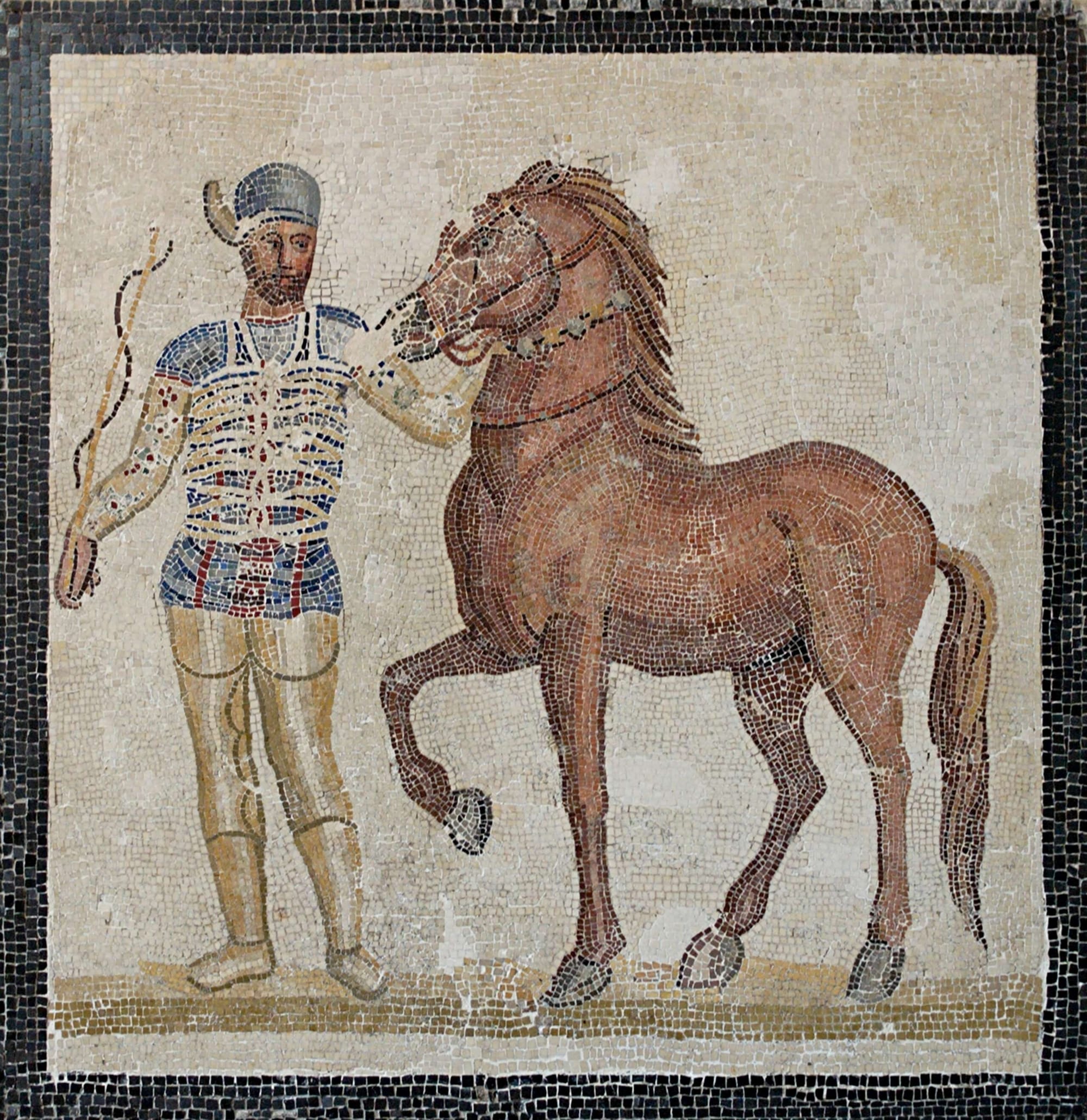
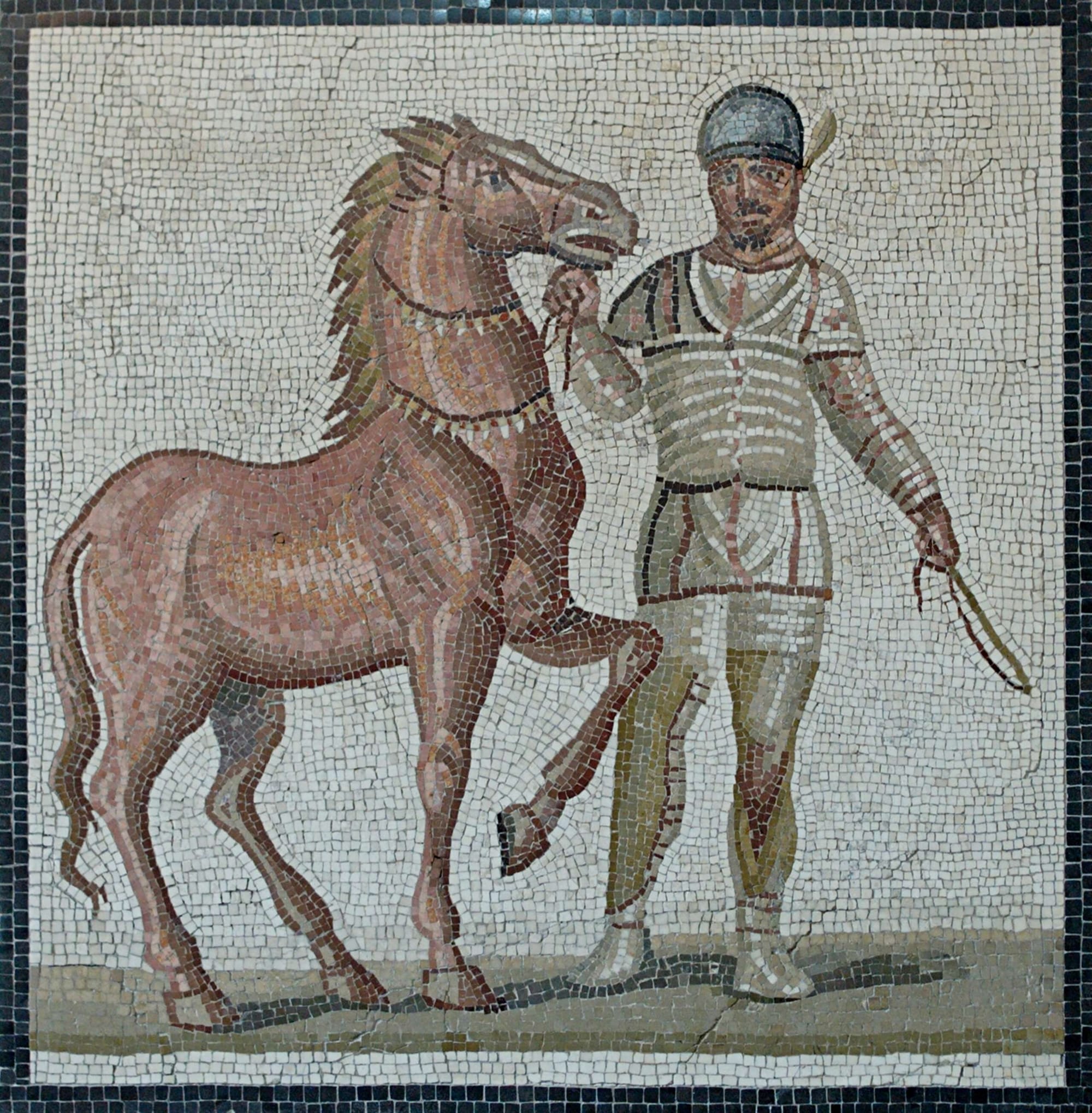
Charioteers of the Red, Green, Blue and White team; part of a mosaic of the third century AD, exhibited in the Museo Nazionale Romano.
“Nor let the contest of noble steeds escape you: the spacious circus holds many opportunities”
This line is from Ars Amatoria, which reveals details about the Circus that might otherwise be unknown: the use of a cushion and footstool, the sensation of another spectator's knees pressing against one's back, and the closely packed seating. For Ovid, this intimate setting made the Circus perfect for flirtatious encounters. In fact, the Circus was the only place where men and women could sit together.
Ovid expands on these opportunities in his Amores where he discusses a racing program and mentions that a race occasionally had to be restarted (remissus) and rerun if there were any irregularities.
"The circus is clear now for the greatest part of the shows, and the praetor has started the four-horse cars from the equal barrier. I see the one you are eager for. He will win if he has your favour, whoever he be. What you desire the very horses seem to know!
Ah, miserable me, he has circled the post in a wide curve! What are you doing? The next hugs close with his axle and gains on you. What are you doing, wretch? You will lose my love the prayer of her heart. Pull, I entreat, the left rein with all your might!
We are favouring a good-for-nought—but call them back, Quirites, and toss your togas in signal from every side! See, they call them back!"
Ovid, Amores III
During Domitian's reign, there were briefly six factions, but the new Gold and Purple stables did not last beyond his death. The original four factions persisted throughout antiquity, though the Reds and Whites had smaller followings compared to the Greens and Blues and eventually became "satellite clubs." The Whites typically allied with the Blues, and the Reds with the Greens, although these alliances occasionally varied.
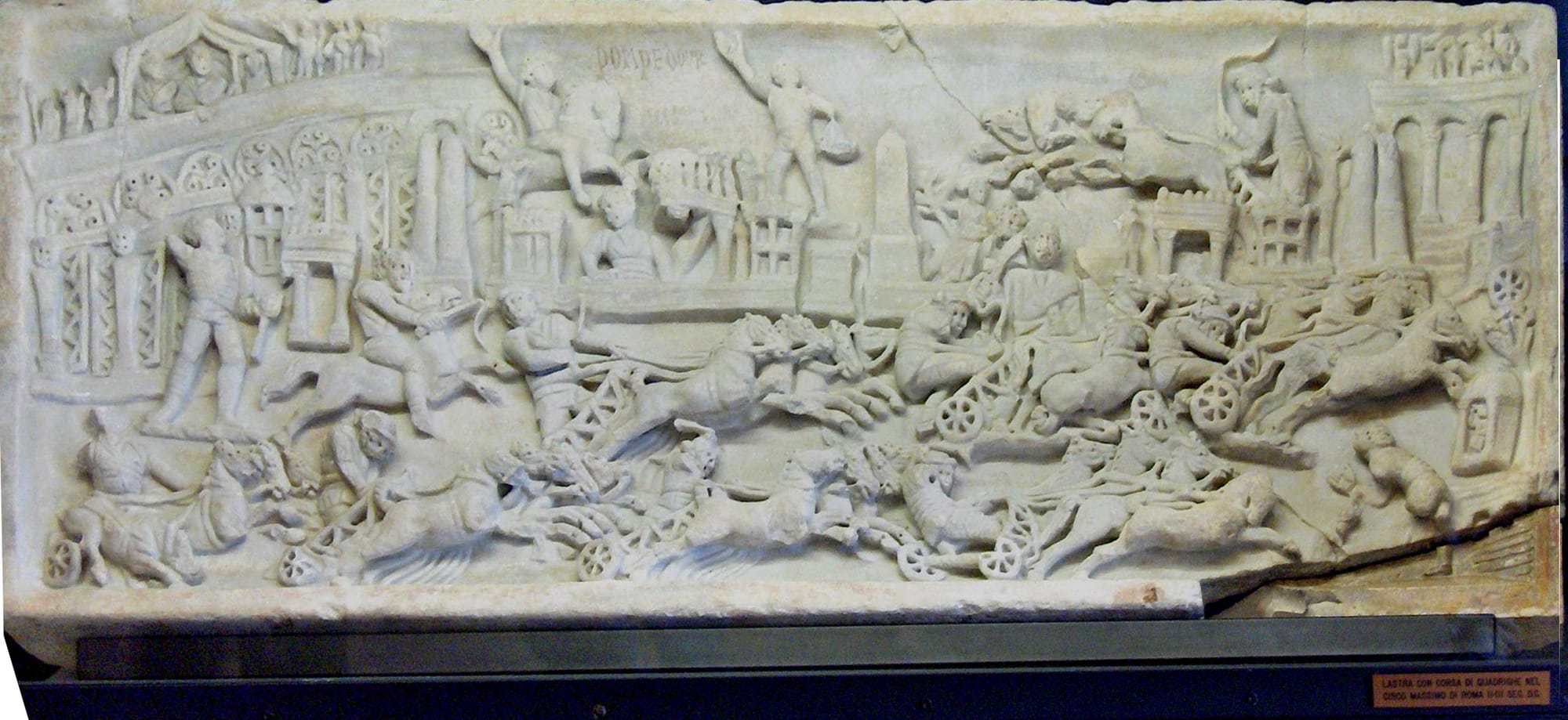
Ready, set, go!
Typically, there were ten to twelve races each day until Caligula doubled this number, making twenty-four races the norm by the end of his reign. The number of festivals featuring racing also increased, with Circus games established to honor Caligula's mother and sister, as well as Tiberius.
Domitian once held one hundred races in a day but reduced the number of laps to five to accommodate them all, while Commodus managed to run thirty races in just two hours one afternoon in AD 192. These figures are exceptional and unlikely to have been repeated, primarily because the horses had to be transported over a mile from their stables in the Campus Martius.
Chariot races at the Circus Maximus began from twelve gates (carceres), arranged six on either side of an entrance from the Forum Boarium. The presiding magistrate, seated above these gates, signaled the start of the races. At the far end, the curved section (sphendone) featured another gate for processions, which was later rebuilt as a triumphal arch in AD 80 to commemorate Titus's conquest of Judea.
The spina, a central dividing wall, was adorned with various monuments and shrines, including those dedicated to Consus and Murcia. Each end of the spina had turning posts (metae) made up of three large gilded bronze cones on a semicircular base. Races involved thirteen counterclockwise laps around the metae, totaling seven laps (spatia) and covering just over three miles, like the race depicted in the classic 1959 movie Ben Hur.
To ensure fairness, the starting gates were slightly curved so each chariot had an equal distance to the break line, beyond which they could change lanes. The presiding magistrate, either a praetor or consul, dropped a white starting flag (mappa) to open the gates and start the race.
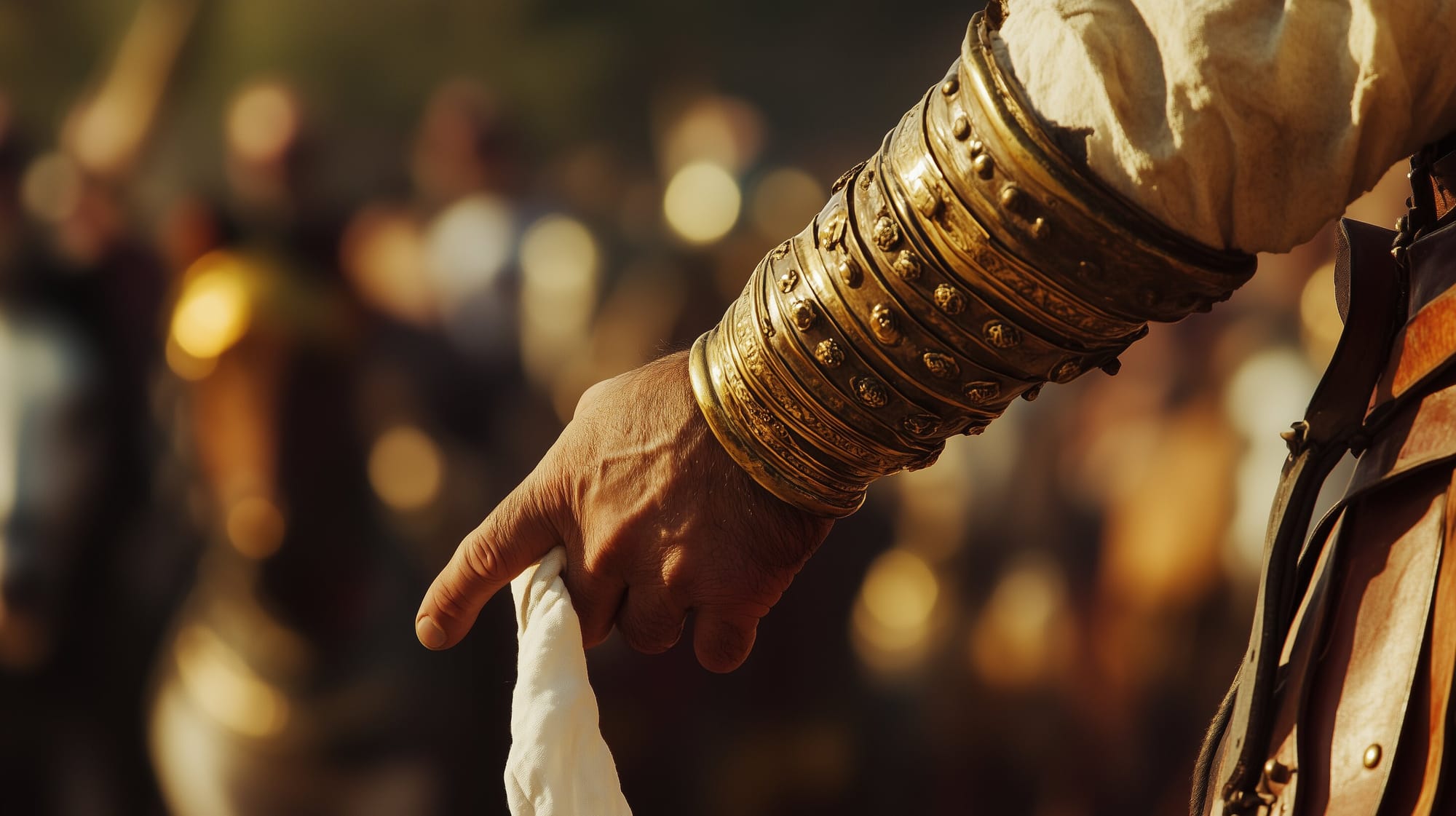
Each quadriga (four-horse chariot) had two outside horses harnessed only by a rein or trace, and a yoked pair in the center, with the right center horse being the most important. The inside trace horse (funalis) set the pace and navigated the turns, often bearing the name in inscriptions due to its significance.
The hard track surface, despite a sand covering, posed risks such as concussions, strains, and broken bones, especially for the inside trace horse. Other dangers included injuries from whips, bits, chariot wheels, or axles. Horses' tails were often bound or cut to prevent entanglement in the reins.
Racehorses were carefully bred, starting training at three years old and racing at five, with long careers afterward. The best horses came from stud farms in North Africa and Hispania, transported to Rome on specialized ships (hippago). Most racehorses were stallions, also valued for breeding.
Charioteers (aurigae) were typically slaves or freedmen, regarded with low social status akin to gladiators. They wrapped the reins around their waists for leverage, steering by shifting their weight. Deliberate fouls and crashes were common, adding to the danger of being dragged or run over. Martial hinted that it might sometimes be prudent for charioteers to hold back to meet the emperor's expectations. Spectators could demand a race be stopped and rerun if they felt it was unfair, leading to excessive race reruns, which Claudius eventually limited.
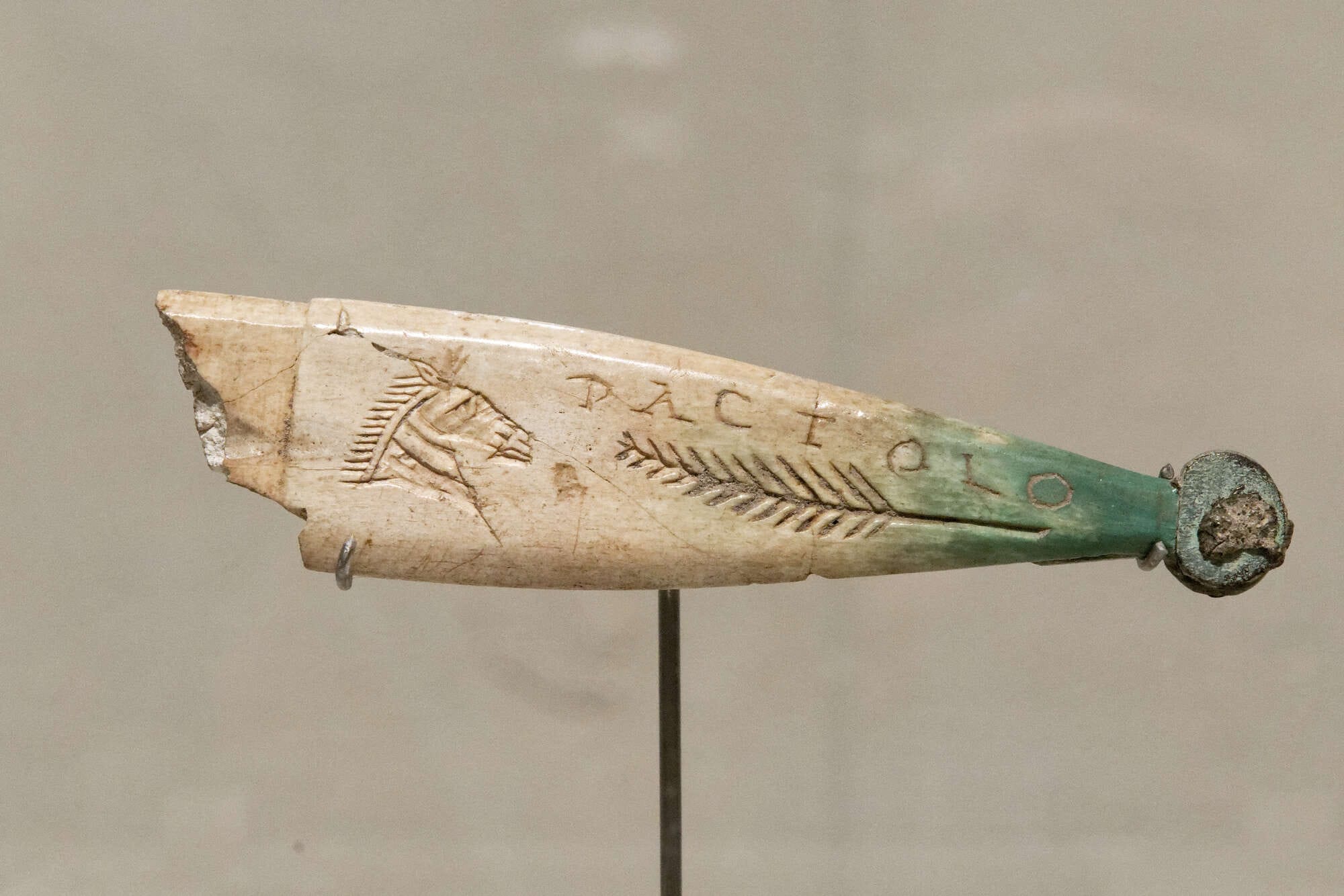
Charioteers also carried a curved knife to cut themselves free in case of a crash.
Charioteer's folding knife handle with a horse. Rome, 4th century BCE. (Museum of the National Library of France, Paris), Public domain
Roman Charioteers and Superstition
Top charioteers were both celebrated and suspected of witchcraft, with some prosecuted during Valentinian's reign for supposed sorcery. Lead curse tablets were also used to invoke terrible fates on rival factions. Some notable curses found from the Roman times, showcase how strong the spectators feelings were, for their favourite teams:
"I adjure you, demon whoever you are, and I demand of you from this hour, from this day, from this moment, that you torture and kill the horses of the Greens and Whites and that you kill in a crash their drivers...and leave not a breath in their bodies."
"I conjure you up, holy beings and holy names, join in aiding this spell, and bind, enchant, thwart, strike, overturn, conspire against, destroy, kill, break Eucherius, the charioteer, and all his horses tomorrow in the circus at Rome.
May he not leave the barriers well; may he not be quick in contest; may he not outstrip anyone; may he not make the turns well; may he not win any prizes..."
"Bind every limb, every sinew, the shoulders, the ankles and the elbows of...the charioteers of the Reds.
Torment their minds, their intelligence and their senses so that they may not know what they are doing, and knock out their eyes so that they may not see where they are going—neither they nor the horses they are going to drive."
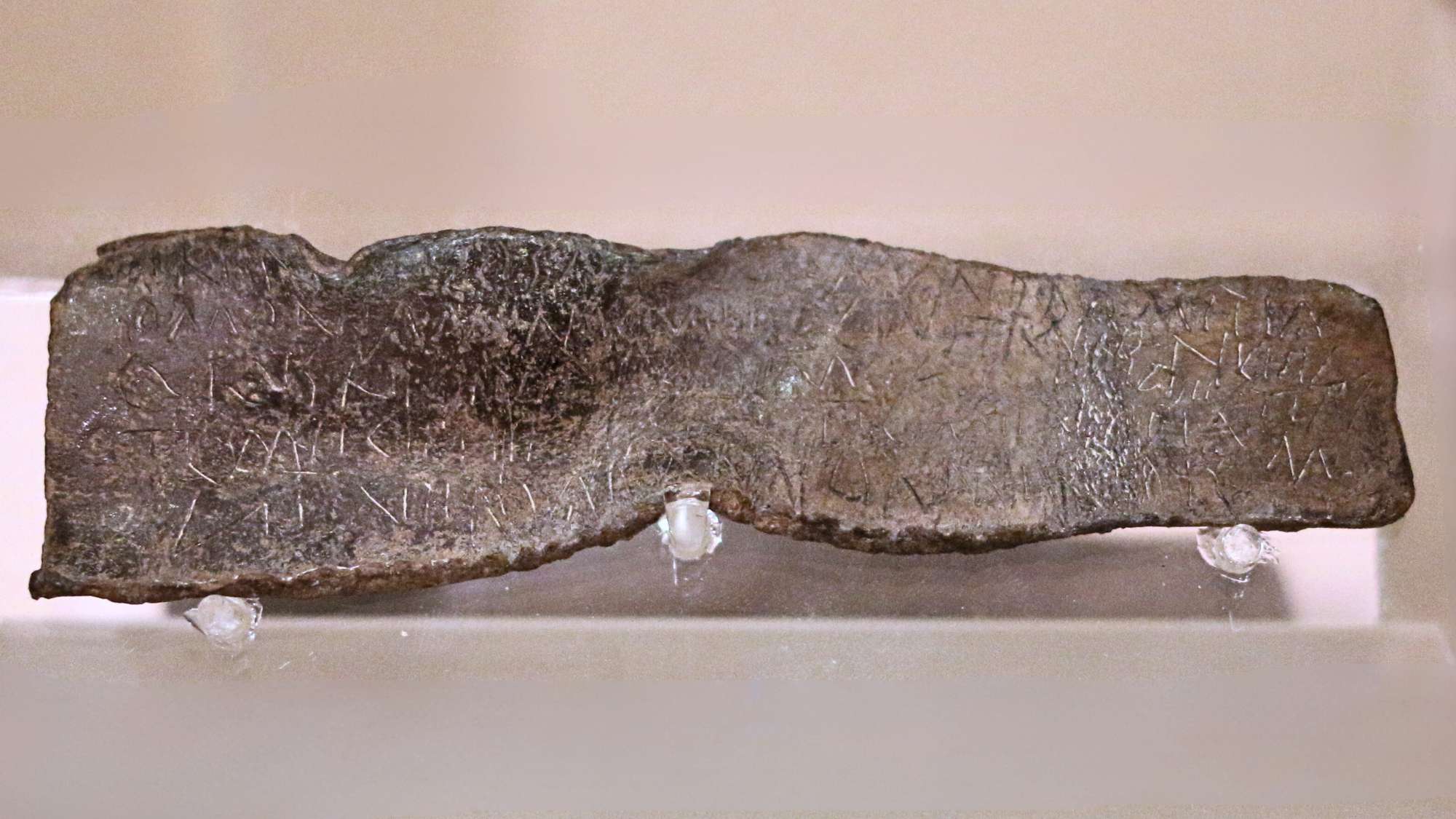
How Rich was a Roman Chariot Racer?
Charioteers could amass immense wealth, particularly those who were freedmen, as they could always threaten to switch factions. Prize money ranged from fifteen to thirty thousand sesterces, reaching up to sixty thousand for a single victory.
Juvenal complains that a chariot driver could earn a hundred times the fee of a lawyer, and Martial writes of Scorpus winning fifteen bags of gold in an hour. Diocles, a charioteer from Lusitania who raced during the reigns of Hadrian and Antoninus Pius, won a total of 35,863,120 sesterces, the astonishing equivalent of approximately $15 billion in today’s money, before retiring at age forty-two.
An inscription dedicated to him records 1,462 wins in 4,257 races over twenty-four years, beginning with his first race in AD 122 at age eighteen (although he had raced for two years before his first victory). One thousand sixty-four of these victories were in singles, where he raced for himself rather than as part of a team.
He rode nine horses to one hundred victories each and one horse to two hundred victories. While others may have won more races, Diocles at least lived to enjoy his success. Scorpus, who had 2,048 victories, died in the arena at age twenty-six, his death eulogized by Martial, with gilded busts of him displayed all over the city.
The Circus was the most popular of the entertainments provided by the emperor, the diverting "panem et circenses" (bread and circuses) which Juvenal satirizes, and its fans were fanatical in their devotion to the races. Writing about partisans in Alexandria in the second century AD, Dio Chrysostom in his Orationes describes them as:
"a people to whom one need only throw bread and give a spectacle of horses since they have no interest in anything else.
When they enter a theatre or stadium they lose all consciousness of their former state and are not ashamed to say or do anything that occurs to them.... constantly leaping and raving and beating one another and using abominable language and often reviling even the gods themselves and flinging their clothing at the charioteers and sometimes even departing naked from the show.
The malady continued throughout the city for several days".





About the Roman Empire Times
See all the latest news for the Roman Empire, ancient Roman historical facts, anecdotes from Roman Times and stories from the Empire at romanempiretimes.com. Contact our newsroom to report an update or send your story, photos and videos. Follow RET on Google News, Flipboard and subscribe here to our daily email.
Follow the Roman Empire Times on social media: